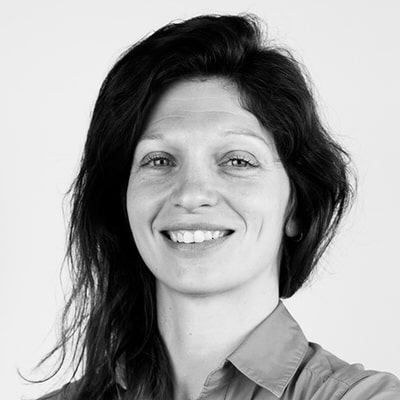What better way to attract attention and showcase innovations than to present them in the form of a hologram? That’s what diagnostic imaging solutions manufacturer Assing did at MEDICA from November 14-17 in Dusseldorf, Germany when the Italian company presented its radio-fluoroscopy system Helios DRF in hologram form.
In the aisles of MEDICA 2022, fewer and fewer exhibitors chose to transport their heavy medical equipment on-site this year, including imposing X-ray systems. Most played ultra high definition video on large screens.
Assing wanted to do something different and invested the budget required to back it up: the company spent a colossal sum to present its Helios DRF system in hologram throughout the duration of the show.
The company claims that its radio-fluoroscopy Helios table is unique in the world. It was designed to favor the aspects of lightness, compactness and reduced dimensions. Each movement of the table has been optimized to facilitate the use by the operator and to ensure maximum patient safety, preventing his or her movements during the examination.
Access Made Easier for All Patients
The table features a motorized rotation of the X-Ray tube of +/- 180°. This allows the directing of the beam towards any external receptor device. For example, when the table is tilted at +90°, the X-ray tube can be directed towards a stretcher or a wall stand. It is activated remotely or from the two control boards placed on the DRF table and the tube front.
The minimum height from the ground of the patient tabletop is only 45 cm, which is the lowest in its category. This makes access easier for all patients. The table is also equipped with an adjustable focus to film distance from 105 to 180 cm (optional 200 cm). Helios DRF allows chest examinations directly on the table, in horizontal or vertical position.

The table comes with one or more extractable grids with different focal distances. Two rails under the flat panel group allow quick and safe parking. The operator can select from among the following modes: fixed grid on field or out-of-field grid.
The large dimensions of the tabletop—250×80 cm— linked to the longitudinal excursion of the X-ray tube column and detector, allow a total patient scan of 210 cm. In this case, there is no need to reposition the patient.

The tube motorized rotation is suitable for the execution of tomography and oblique projections without mechanical bar support. The tomography (up to 5 tilting angles) is bidirectional and can be done in each position of the table and dynamic flat panel.
Making Imaging Possible Everywhere in the Room
Helios has an integrated remote control console with a touchscreen monitor. It can control all table movements, exam preparation and generator settings. The console includes an additional set of 4 joysticks to control the main movements like tilting, longitudinal travel, column displacement, etc. All table controls are also available on the two control boards placed on the flat panel and X-ray tube front.
Helios DRF can be combined with the use of a tube stand, a vertical stand and a 35×43 cm or 43×43 cm cassette-sized wireless flat panel.
With the integrated use of a wireless portable detector and a ceiling tube stand, the system achieves maximum flexibility, making it possible to perform imaging everywhere in the room as well as to conduct examinations on patients in wheelchairs or stretchers. Adding a vertical bucky stand would complete the spectrum of upright examinations that are possible, such as lateral projections. A single acquisition console is able to capture images coming from both the dynamic and static panel.
A Full Range of Applications
Complete dynamic procedures and high-resolution radiographic acquisitions for a full range of fluoroscopic, angiographic and radiographic applications. For example, among the dynamic Imaging and angiographic applications, the system can perform gastrointestinal examinations, urogenital tract examinations, endoscopy, arthrography, venography, lymphography, etc.

It can also perform static imaging for radiographic examinations (such as skeletal radiography) as well as tomosynthesis which is a technique that allows the reconstruction of volumetric images starting from a finite number of bi-dimensional projections taken at different tube angles. Tomosynthesis is especially well accepted by patients affected by severe claustrophobia.
Dose Reduction
Through the dual energy (DE) acquisition, Helios’ software can generate three different images. The first one shows the soft tissues, the second image shows the bones and the third is an overlap of the first two images. This is a very convenient technique for chest X-rays as it helps detect pulmonary nodules. Moreover, dosage in DE is by far lower than in dedicated CT scans, which can be considered as a second level analysis.
The Vet Version

There is also a version for veterinary applications. The CDR Digital VET Veterinary X-ray table is a veterinary table with a built-in monoblock-type generator.
According to the company, thanks to its reduced dimensions, high frequency and top performance, this machine is recommended for use in veterinary wards.
The electronics are integrated into the unit with a touchscreen console for the X-ray settings. The table is equipped with a digital flat panel and acquisition as well as a post-processing workstation, which allows the image to be on the monitor in just a few seconds.
This is particularly useful in the case of diagnosis of hip dysplasia, for instance.
Assing was created in 1971 with the ambition of developing responsible innovation. They offer expertise in the design, creation and testing of high technology infrastructures—from the identification of the appropriate analysis technique up to the supply and use of the related systems and from the technical-scientific advice on the interpretation of results to the organization of advanced training courses. Their business areas include the healthcare, pharmaceutical and automotive sectors as well as instruments for nanomaterial research.











